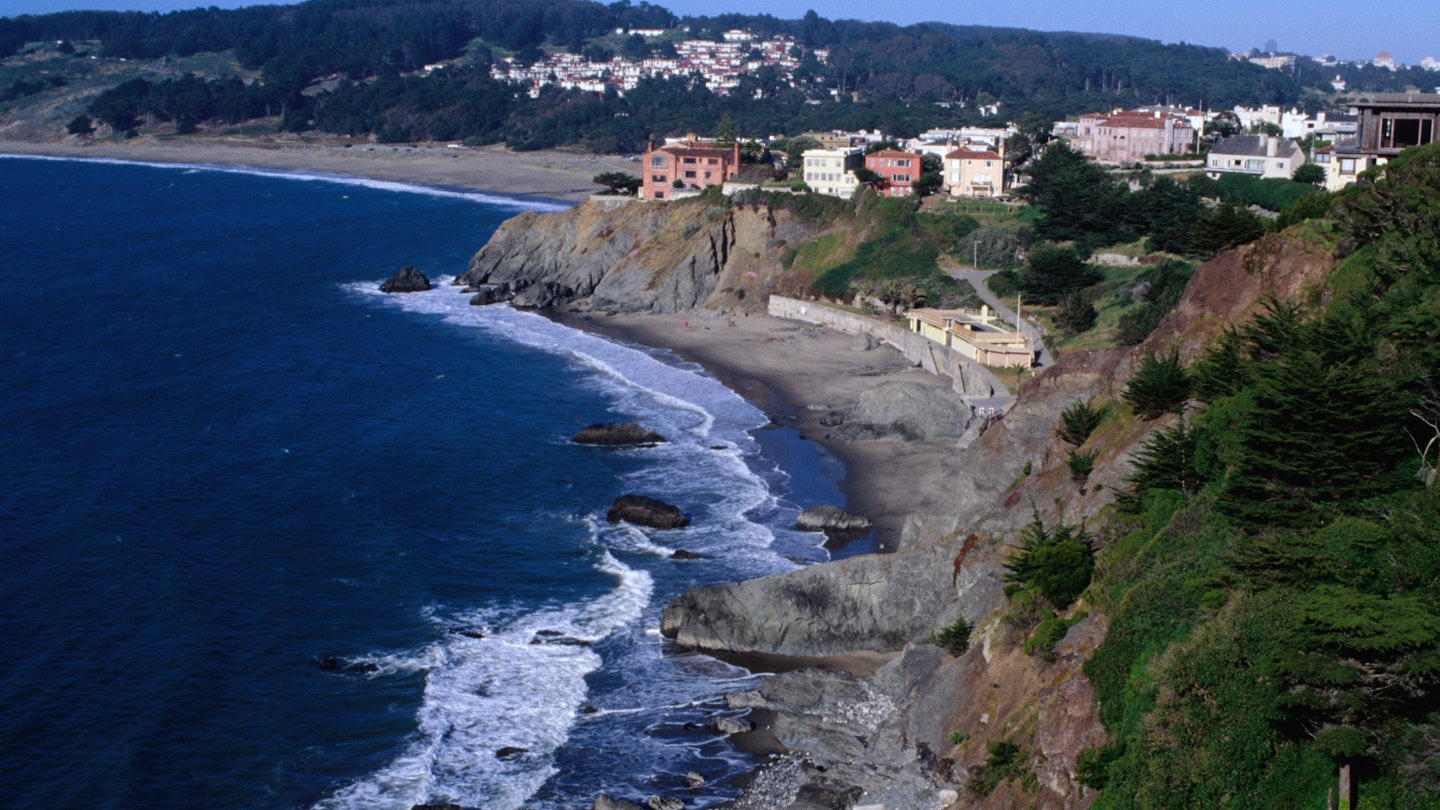Hidden Attractions of San Francisco
San Francisco is renowned worldwide for its beauty, open-mindedness, and iconic sites like the Golden Gate Bridge and Alcatraz. However, this storied city possesses much more than just its recognizable features; it is equally cherished for its quirkiness and distinct personality.
Therefore, it comes as no surprise that the City by the Bay houses many unlikely attractions in various locations that locals treasure even more than the well-known spots like The Painted Ladies or Fisherman’s Wharf. Below are a few choice secrets, some new and some old, all original to San Francisco.
The Wave Organ
Perched at the tip of a jetty in the San Francisco marina, the Wave Organ is a musical instrument played by the bay itself. Completed in 1986, the instrument comprises 25 PVC organ pipes of various lengths that extend into the water beneath the jetty. As the tide shifts, the sounds emitted by the Wave Organ evolve. When the tide comes in, it creates a gentle burbling sound, and as it recedes, it produces not-so-genteel belches. Often, it generates eerie ghostly sounds, a fitting tribute considering the jetty is composed of materials from the demolished Laurel Hill Cemetery.
Bernal Heights Swing
The Bernal Heights Swing is a picturesque spot that invites you to stimulate your vestibular system while enjoying stunning panoramas of the city, inspiring countless Instagram posts. Moreover, it’s a perfect place to watch Karl the Fog swirl through the San Francisco skyline, reflecting the city’s ongoing transformation as a living work of art.
Seward Street Slides
Among San Francisco’s famous hills, the Seward Street Slides stand out as a hidden gem located high above the Castro in the Noe Valley hills. These twin slides made of smooth cement were designed in 1973 by 14-year-old Kim Clark, with support from the renowned San Francisco sculptor Ruth Asawa.
To experience the fun, ride the slides sitting on a piece of cardboard – you might find some at the foot of the slides, though it’s wise to bring your own. Sit on your cardboard and push off from the top. For a faster ride, throw a handful of sand down before you set off. Although adults are technically required to be accompanied by children, many indulge in a secret joy ride, provided you keep the noise down to avoid disturbing the neighbors.
Camera Obscura
The Camera Obscura, which projects panoramic views into a darkened room without lenses, continues to captivate visitors. Built in the 1940s at San Francisco’s Cliff House, this installation allows you to see stunning 360-degree panoramas of the Bay projected onto a parabolic screen, creating a unique way to appreciate San Francisco’s breathtaking scenery.
The Golden Fire Hydrant
In 1906, a devastating earthquake and fire devastated much of San Francisco, including the Mission District. Legend has it that many fire hydrants were never connected to the water supply due to corruption. Fortunately, a single hydrant at the corner of 20th St and Church St functioned, preventing the fire from spreading further.
Each year on April 18, the anniversary of the earthquake, this Golden Fire Hydrant receives a fresh coat of gold paint. Situated at the southwest corner of Dolores Park, it offers one of the finest panoramic views of San Francisco’s modern skyline.
Cayuga Park
Offering a slice of nature in urban San Francisco, Cayuga Park symbolizes the city’s community spirit. This modest park, though smaller than popular parks like Golden Gate Park, is a cherished local retreat located beneath the BART line in the Outer Mission neighborhood. Spanning nearly 4 acres, it features winding paths and hand-carved wooden sculptures created by Demetrio Braceros, a dedicated city employee.
Braceros spent two decades transforming Cayuga into a genuine oasis, complete with colorful sculptures and trails named The Garden of Eden and The Walk of Hope, reflecting his commitment to enhancing the park’s appeal.
Andy Goldsworthy’s Spire
Since the observation deck closed after September 11, 2001, the TransAmerica Pyramid is no longer the tallest structure in San Francisco; that title now belongs to Andy Goldsworthy’s Spire, built from 37 reclaimed Monterey cypress trees in 2008, soaring 90 feet above a secluded hiking trail in the Presidio.
The structure resembles both a church steeple and a missile, fitting for its location, as the Presidio served as a military outpost since its founding in 1776. After its retirement from service in 1994, it transitioned into a sprawling park where visitors can enjoy stunning views that extend all the way to downtown San Francisco.
San Francisco History Center at SF Main Public Library
Known as ‘San Francisco’s attic,’ the sixth floor of the SF Main Public Library boasts an extensive collection of books, photos, and memorabilia from the city’s rich history. It houses original photos from the Gold Rush, vintage restaurant menus, and other fascinating artifacts from San Francisco’s past.
The Filbert Street Steps
The origin of the parrots on Telegraph Hill remains a mystery, but the Filbert Street Steps provide an excellent opportunity for birdwatching. This secret wooden staircase descends from the top of Telegraph Hill toward the Embarcadero and traverses the lushly manicured Grace Marchant Garden, a local treasure established in the 1940s, maintained by nearby residents.
San Francisco Columbarium
As urban development progressed in the early 1900s, San Francisco relocated many western graveyards to Colma. This shift led many locals to favor cremation, and they began choosing the elegant neo-classical San Francisco Columbarium as a dignified resting place for their ashes.
Today, the SF Columbarium is a beloved landmark featuring art nouveau stained glass windows and memorials commemorating local figures such as Chet Helms and Harvey Milk. Visitors are encouraged to maintain hushed tones as they explore this peaceful resting place.





